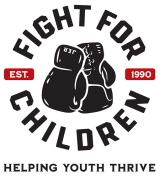Picture a child who has been relegated to learn alone on screen. Or one who, generally separated from friends and schoolmates, feels increasingly isolated, maybe even alienated. Imagine the child who is constantly triggered by adverse experiences from their childhood, or the one who, deprived of opportunities to set meaningful goals or be a part of something bigger than themselves, has nowhere to turn for guidance, support, or encouragement because they lack positive relationships with adults who believe in them.
Now imagine a segment of an entire generation of young people like that.
This could be where we’re headed, especially if our youth sports programs do not survive the pandemic. The Aspen Institute’s report, State of Play 2020 revealed an unsurprising, but still alarming, precipitous drop in youth sports participation during the pandemic among young people ages 6-18. School sports have been shut down. Community-based sports have been severely hampered by social distancing requirements and lack of access to public spaces. Competitive travel sports, which are largely unregulated, have continued to operate, but have become even limited to the most elite athletes and families who can afford the exorbitant expense. Young people in underserved communities, like those served by the Fight For Children Institute, have been primarily left on their own behind closed doors, without sufficient opportunities for meaningful non-parent adult or peer interactions.
Youth sports programs with trained, caring coaches have been proven to help young people deal with trauma and overcome tough life situations. Exercise is known to stimulate brain development that leads to better results in school. The team environment is a place where young people develop lifelong bonds with friends and mentors who can shape the course of their lives. So it is no exaggeration to say that, without youth sports, the future is bleak.
It appears that professional and collegiate sports have provided a source of entertainment for millions of Americans sheltering in place while no substantial production has been made to preserve nonprofit organizations that provide sports-based youth development (SBYD) programming to some of our nation’s most vulnerable young people. By intention and design, SBYD organizations serve young people and families in underserved communities and focus on the development of life skills through sports. These programs can help children with disabilities to gain a sense of belonging, help court-involved youth get on the right track, and provide young people safe places to learn, grow, and develop life skills. Without SBYD programs (typically run by nonprofits) as a resource, our recovery from COVID-19 will be that much more difficult.
While we address and endure this prolonged global crisis, it is important that we do not lose sight of the longer view at the local level. Next to health and education, youth development is the third leg on the stool that can help young people emerge from difficult circumstances and become contributing members of our society. We cannot afford to lose youth development programs any more than we could endure a loss of healthcare or a classroom education (both of which are struggling in their own right!)
We are asking a lot from our young people today. We are asking them to persevere in the face of adversity, to challenge past social conventions and find new ways to thrive, and, ultimately, to re-define themselves and discover how they will successfully act and interact in our new world. The least we can do is be there for them when the world opens up again. I’m not convinced we were fully there for them before, but maybe now we’ll find greater value in making sure we are present when they and their families are ready to emerge from our current state.
A notion I wrote about more than 20 years ago unfortunately couldn’t be truer today. That was, “Many youth are at-risk, but another and perhaps more compelling viewpoint, is that society itself is at-risk; that is, at risk of losing this group of young people. In addition to losing a potential valuable human resource, society will continue to accrue exorbitant social and financial costs born out of the loss.” Investing in youth sports, and SBYD programs in particularly, may be one remedy…and it’s been hiding in plain sight for decades! We know kids involved with SBYD program are more likely to graduate high school than their peers, are less involved with the court system than their peers and are more healthy both physically and emotionally.
This is why Fight For Children is committed to stabilizing, supporting, and strengthening SBYD organizations, to ensure that as many young people as possible have access to quality experiences that can literally be life changing. We urge funders and policymakers to join us in this effort, to make sure that the playing field is level and that access to sports is a priority. For many young people, sports is a sanctuary, so to them an empty field could mean an empty life.

